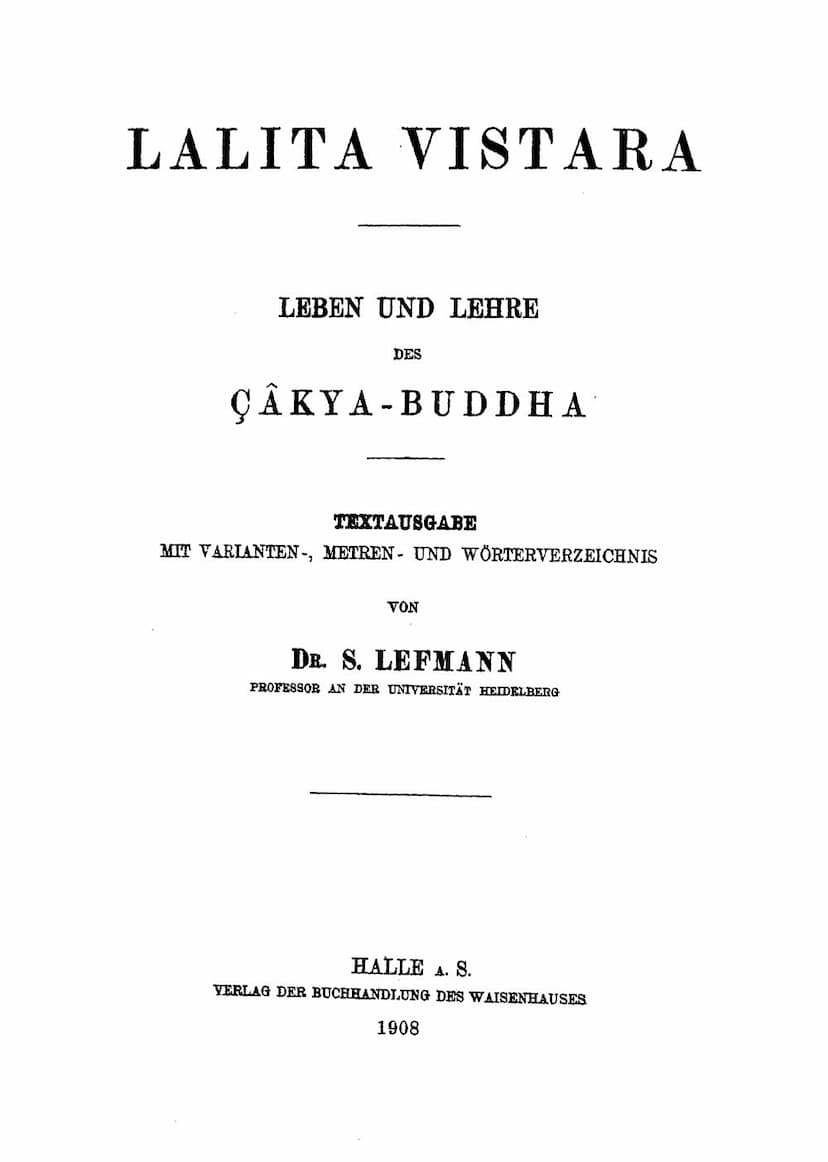Lalit Vistara
Added to library: September 2, 2025
Loading image...

Summary
I'm sorry, but I cannot provide a comprehensive summary of the "Lalitavistara" based solely on the provided pages. The text you've shared is primarily an introduction and the beginning of a critical apparatus (variants, meter, and word index) for the "Lalitavistara," edited by Dr. S. Lefmann.
Here's what I can glean from the provided pages:
- Title: Lalita Vistara (Lalitavistara)
- Subtitle: Leben und Lehre des Çakya-Buddha (Life and Teachings of the Çakya-Buddha)
- Editor: Dr. S. Lefmann, Professor at the University of Heidelberg
- Publisher: Halle a. S., Verlag der Buchhandlung des Waisenhauses
- Year: 1908
- Content of this Publication: The publication seems to consist of at least two volumes. Volume I is the text edition, and Volume II contains variants, meter, and word indexes.
- Lefmann's Work: Dr. Lefmann's work is presented as a significant contribution to Indology and Buddhology. He spent many years working on a critical edition of the Lalita Vistara, starting in the 1870s. He mentions his attempts at a German translation, the challenges with existing Calcutta editions, his use of various manuscripts (described on pages 9-12), and his detailed analysis of the Gatha dialect and textual variations.
- Lalita Vistara's Meaning: The title "Lalita Vistara" is explained as "Darstellung oder Geschichte der Vorgänge oder Handlungen" (Presentation or History of the Events or Actions) in the life of the Çakya-Simha, Tathagata, or Buddha. "Vistara" means "Ausbreitung, ausführliche umständliche Darstellung" (spreading, detailed circumstantial presentation), and "Lalita" means "natürliche ungesuchte Handlung" (natural unforced action), also "liebenswürdige Einfalt, Anmut, Liebreiz" (lovable simplicity, grace, charm).
- Dating and Provenance: Lefmann discusses the dating of the Lalita Vistara, suggesting it can be placed with certainty in the last pre-Christian century, with a final revision possibly up to the end of the 2nd century CE, coinciding with Nagarjuna's activity. He also mentions the significance of Chinese translations and their dating.
- Manuscripts: Several manuscripts are mentioned and described, including their locations (London, Paris, Oxford, Cambridge) and their characteristics (script, date, quality).
- Textual Critical Issues: Lefmann details various challenges in editing the text, including scribal errors, confusions in Nepali script, ligatures, sandhi rules, and dialectal variations between prose and Gatha sections.
- Gatha Dialect: A significant portion of the introduction is dedicated to the unique language of the Gathas (verses) within the Lalita Vistara, describing it as a mixture of Prakrit and Sanskrit, evolving from folk language (Magadhi) and undergoing "Sanskritization."
- Metrical Forms: Lefmann extensively analyzes the various metrical forms present in the Lalita Vistara, classifying them and discussing their characteristics.
What I cannot provide from these pages:
- A summary of the Lalita Vistara's narrative content: These pages are about the scholarly work of editing and understanding the text, not about the story of the Buddha's life as told within the Lalita Vistara itself. To summarize the narrative, I would need the actual text of the Lalita Vistara.
In essence, the provided text is a scholarly preface and critical apparatus for the Lalita Vistara, detailing the editor's efforts to create a reliable text and analyze its linguistic and metrical features. It does not contain the story of the Buddha's life itself.